See: Wave Envelope
See: Wave Envelope
The meaning and operation of this applet is basically the same as for Understanding Standing Wave Diagrams 1 - Both Ends Fixed . Please see that page if you are unclear how to proceed here.
Below are several static diagrams of standing waves for a medium open at both ends, along with the names for each vibration and a count of the antinodes and nodes for each vibration.
If you are unclear about the meaning of the terms 'antinode' and 'node', be sure to look back at Understanding Standing Wave Diagrams. Page through the animation that you will find there. The meanings of the terms 'antinode' and 'node' are presented in that animation and also in the discussion on that page.
| Picture of Standing Wave | Name | Structure |
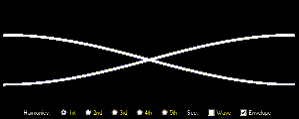 |
1st Harmonic |
2 Antinodes |
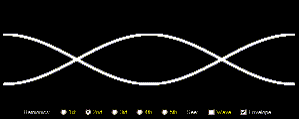 |
2nd Harmonic |
3 Antinodes |
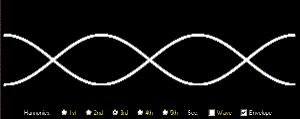 |
3rd Harmonic |
4 Antinodes |
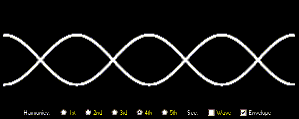 |
4th Harmonic |
5 Antinodes |
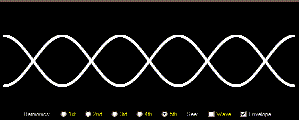 |
5th Harmonic |
6 Antinodes |
Notice that this harmonic structure is the same as that for the medium fixed at both ends, but different from that for the medium fixed at one end and open at the other end. This harmonic structure, like the one for both ends fixed, proceeds from the 1st to the 2nd to the 3rd harmonic, and so on. The harmonic structure for the fixed at one end and open at the other end medium proceeds from the 1st to the 3rd to the 5th harmonic, and so on.
However, in every case, (fixed at both ends, open at both ends, fixed at one end and open at the other end), the first possible standing wave is called the fundamental, the second possible standing wave is called the 1st overtone, the third possible standing wave is called the 2nd overtone, and so on.